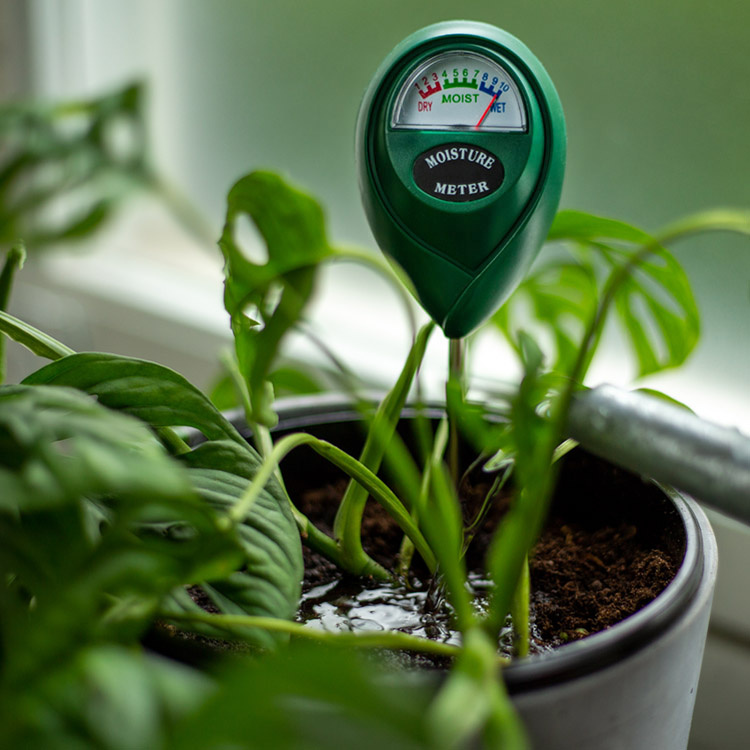The Science Behind Moisture Meters: How They Function and Why They're Essential
The Ultimate Overview to Dampness Meters: A Comprehensive Overview and Exactly How They Can Save You Cash
Moisture meters offer as indispensable devices in identifying and keeping an eye on moisture content in products, assisting in stopping costly damages and ensuring the quality of products. Recognizing the nuances of different types of moisture meters, their applications, and the possible cost-saving advantages they supply can be a game-changer for companies and professionals alike.
Types of Moisture Meters
One common type is the pin-type moisture meter, which determines the electrical resistance between two pins inserted right into a product. Pinless dampness meters, on the other hand, use electro-magnetic sensing unit plates to check a bigger area without triggering damage to the material's surface.

Additionally, there are also specialized wetness meters designed for particular products like soil, grain, or hay. These meters offer accurate dampness analyses tailored to the one-of-a-kind buildings of the material being checked. Infrared dampness meters gauge the thermal residential properties of a product to determine its dampness material non-invasively, making them useful for applications where pin or pinless meters may not appropriate. Comprehending the various types of wetness meters readily available can aid sectors choose one of the most ideal device for their certain wetness measurement demands.

Advantages of Utilizing Wetness Meters
Moisture meters supply invaluable advantages in accurately examining and monitoring wetness levels in diverse products and atmospheres (Moisture Meter). Among the main benefits of making use of wetness meters is the prevention of potential damages triggered by excess moisture. By finding and resolving high moisture degrees beforehand, wetness meters help to stop mold development, rot, and architectural damage in buildings, conserving both time and money on repairs. Furthermore, moisture meters aid in making certain the high quality of products throughout construction or production processes. By precisely determining wetness material, these devices aid maintain the stability of timber, drywall, concrete, and other materials, decreasing the risk of failures or issues.
Furthermore, using moisture meters can lead to increased power performance. In farming setups, moisture meters play a vital duty in maximizing crop returns by making it possible for farmers to monitor dirt wetness degrees and make informed watering choices.
Just How to Select the Right Wetness Meter
When picking a moisture meter, it's vital to make certain that the meter is suitable for the certain material you will be testing. Various products have differing electric homes that can affect dampness analyses, so choosing a meter made for your material is vital for exact outcomes. By meticulously evaluating these variables, you can select a wetness meter that satisfies your needs and offers exact moisture dimensions for your tasks.
Appropriate Methods for Wetness Meter Use

Price Financial Savings With Wetness Meter Applications
Exactly how can the critical use of moisture meters cause considerable cost savings across various sectors? Dampness meters play an essential role in price savings by avoiding prospective damage and ensuring quality assurance in various industries. In the agriculture sector, wetness meters aid in identifying the optimum time for gathering crops, protecting against over-drying or excess dampness that can affect the end product's high quality. This accurate monitoring assists farmers avoid unneeded losses and maximize their return.
Likewise, in construction, wetness meters aid avoid pricey damages by identifying dampness degrees in building materials, such as timber or concrete, which can lead to structural concerns otherwise resolved quickly. By identifying problem areas beforehand, specialists can take corrective steps to prevent substantial repairs or substitutes, inevitably saving time and cash.
Furthermore, in the food processing market, moisture meters are necessary for monitoring product high quality and making sure conformity with safety and security regulations. By accurately gauging moisture content in food, producers can avoid wasting, preserve quality, and minimize waste, resulting in considerable expense savings. Generally, the calculated application of wetness meters is a useful financial investment that can cause significant expense decreases and enhanced effectiveness across various industries.
Conclusion
In conclusion, wetness meters are important devices for identifying and determining moisture degrees in various products. By using the right wetness meter and following appropriate strategies, users can properly avoid pricey problems caused by excess wetness.
Dampness meters serve as crucial tools in finding and keeping track of moisture web content in materials, assisting in stopping pricey damages and making sure the top quality of products. Infrared moisture meters determine the thermal homes of a material to identify its dampness web content non-invasively, making them useful for applications where pin or pinless meters may not be ideal.Dampness meters offer indispensable benefits in accurately monitoring and evaluating wetness degrees in varied products and settings. In farming setups, dampness meters play an important function in enhancing plant returns by making it possible for farmers to check dirt wetness degrees and make educated watering choices.In verdict, dampness meters are useful devices for identifying and gauging wetness levels in different materials.